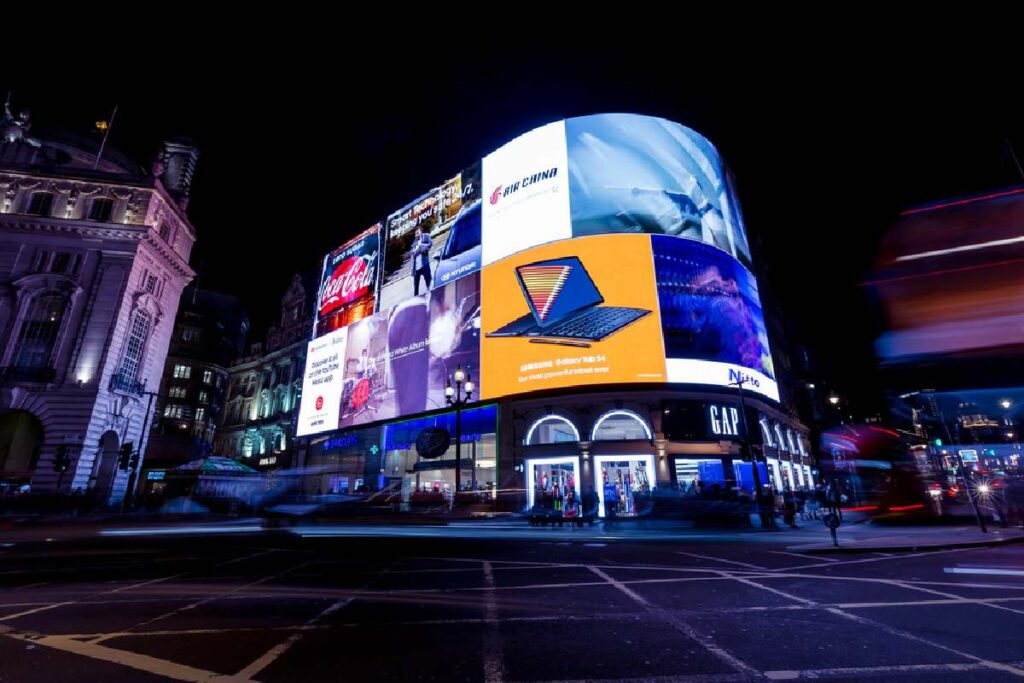How COVID-19 Has Changed Outdoor Advertising? – Advertising and marketing have always been a very fluid part of any business. And with constant changes to the market, new products and services that companies design, and environmental factors like the pandemic, this aspect shone a spotlight.
At the start of the global health dilemma, many companies and their clients came to an almost grinding halt. The world was sitting on the edge of its seats to see where the pandemic would lead them, personally and professionally.

This pause gave companies time to reconsider their position in the market and consider new ideas and strategies to implement once restrictions are lifted. As it is custom for advertising sales and trends to follow the spending of the consumers, companies had to consider the following changes that COVID-19 made to outdoor advertising:
Table of Contents
1. Acquisition Of Talent From Outside The Company
With the markets having such a dramatic shift in consumer behavior, companies needed to find fresh, new ideas for keeping their clients interested in their products. Building a brand in the new normal isn’t easy, and businesses realize their resources may not be enough.
Hence, many businesses decided to recruit remote workers, while others combined their in-house talent with outside influence. Although there are different ways of introducing new concepts into advertising campaigns, working with professional services like advertising agencies was a good starting point for sprucing up outdoor ads and maximizing return on investment.
Not only did these agencies and new talent have insights into the shifting market, but their creativity also allowed the company to view things from a different perspective.
2. Advertising Became Data Driven For Companies
Before a company finalizes its budget for expenses, it will re-evaluate each department to see where adjustments are needed. One of the first products for discussion is outdoor marketing, as there was little to no movement outside customer homes, especially with a raging global pandemic.
Businesses had to analyze their consumer data with a fine-toothed comb and a magnifying glass to ensure that they only spend on necessities that align with the market conditions and shifting consumer behavior and climate. They had to condense advertising campaigns instead of cyclically running various campaigns.
Looking at the global trends for advertising spending, companies had to follow suit with their competitors. They also had to employ tactics like surveys to get more accurate data from their audience to ensure they’ll come up with relevant advertising that would benefit their bottom line and meet their consumers’ needs.
3. Shift Of Engagement Trends Based On Customer Behavior
Flexibility has become one of the critical ingredients for success in the advertising arena. Companies that don’t consider more flexible options and continue using their old ways of advertising are likely to lag behind those willing to change.
COVID-19 confined many to their homes, which increased their screen time and how they spend more time online. Instead of a long and tiring commute, they could order groceries, clothing, and other products online. It also moved their attention away from outdoor media and toward digital options.
Also, streaming content became more popular, causing a significant shift for advertisers to move their content to these platforms and not their regular avenues like television, radio, print, or outdoor billboards. Even when companies think this is a revenue loss, they gain the opportunity to interact with their customers more on other digital platforms.
4. Exploring New Concepts For Effective Advertising
Companies realized that the pandemic was forcing them to change their ways and include more of the media their customers would want. If anything, it drew them closer to their clients because they now needed to understand the consumer dynamic.
Billboards and other out-of-home advertising had to move closer to where the clients would notice them. Online platforms started to incorporate more and more paid advertising into their content, meaning companies can now invest in digital banners and not their usual streetlamp-style media presentations.
Companies invested increasingly in digital platforms even after people had started returning to the streets. Street-side advertising also moved to digital style boards that could accommodate a greater variety of media, including animations and eye-catching, colorful displays that digital marketing professionals optimize for their clients.
Wrapping It Up
The COVID-19 pandemic has had a significant impact on many different aspects of life and business. The most noticeable impact was on outdoor advertising trends and their effect on consumers. Companies had to scramble to adjust, but the results were well worth their efforts.
New talent moved into the picture, and alternative avenues became a new norm, while advertising continues to restructure after the blow to the world economy. Instead of a slow and steady revolution into new ways of advertising and marketing brands, the pandemic only accelerated an inevitable process that businesses worldwide realized as a vital part of surviving an otherwise devastating sequence of events.
Marie Genaro
Marie Genaro is a marketing specialist and consultant with over a decade of experience in the marketing and advertising business. She is also a writer and contributor to many publications. Marie describes herself as a workaholic, but when she can, she loves to spend lazy days at the beach.

